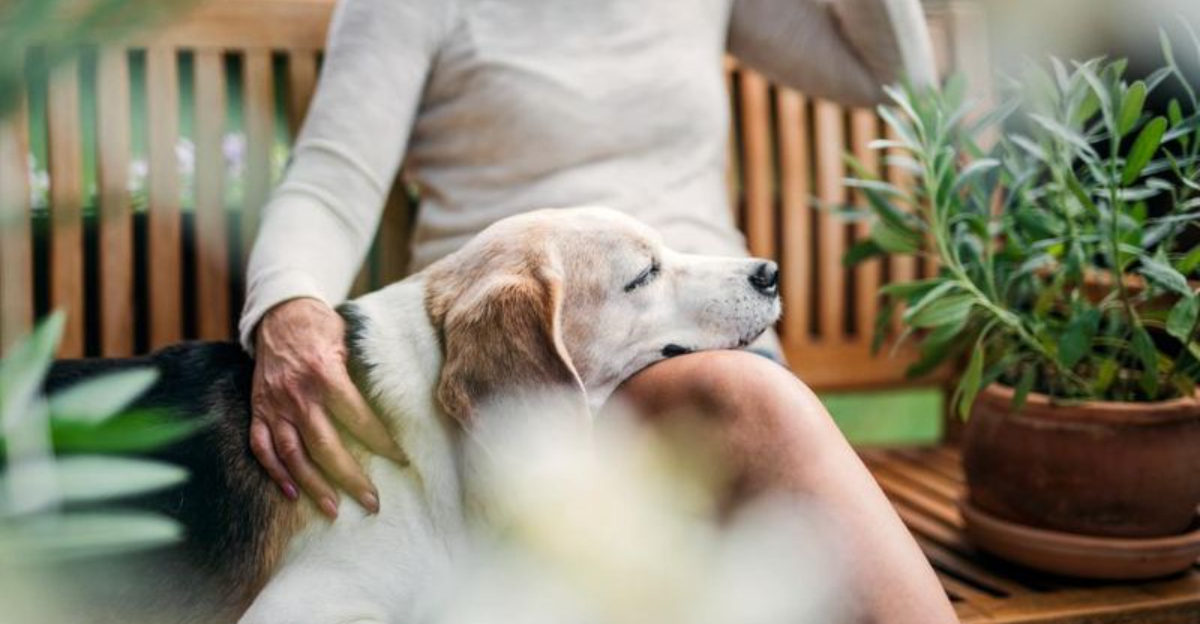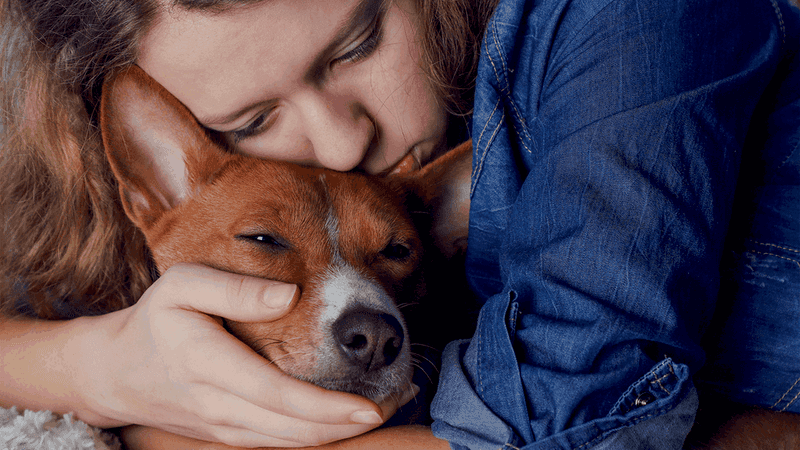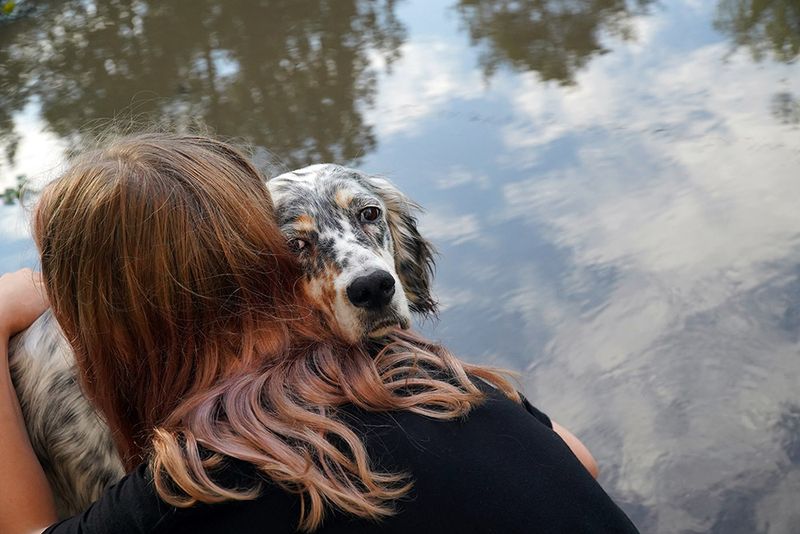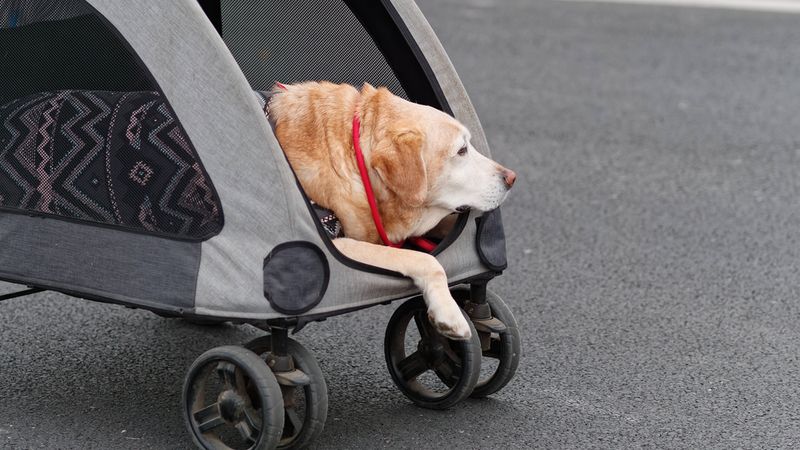Dogs have a special way of communicating with us, and as they age or face health challenges, they might express their goodbyes in subtle ways. Understanding these signs can help us respond with the love and compassion they deserve. Here are 12 ways your dog might be telling you goodbye and how you can say it back with love.
Lingering Gazes
Lingering gazes can speak volumes. Your dog might look at you with soulful eyes, as if trying to capture memories. These moments can be precious, filled with a deep connection that words can’t convey. In such times, mirror their gaze with warmth and gentleness. Let them know they are loved and cherished every single day. This silent communication is their way of saying they’ll always be with you. It’s important to spend quality time with them, sharing quiet moments that will last a lifetime in your heart.
Loss of Interest
When your dog’s enthusiasm for playtime fades, it could be a sign they’re preparing to say goodbye. Their once favorite toy might be neglected, as they prefer resting in a sunny spot. A gentle touch or a soothing voice can offer comfort. Sit with them, sharing a peaceful moment that transcends the need for activity. By recognizing their shift in interest, you’re acknowledging their journey and saying goodbye with compassion and understanding. This time together is invaluable, a testament to your deep bond.
Seeking Solitude
If your once-social dog starts seeking solitude, it might be their way of preparing for departure. They may retreat to a cozy corner, wanting space to rest. Respect their need for peace, but be present when they desire company. Sit quietly nearby, offering companionship without intruding. This balance of giving space and being present shows your deep love. It’s a silent exchange, a mutual understanding that honors their needs and respects their journey.
Changes in Eating Habits
A sudden change in appetite can indicate that your dog is signaling a goodbye. They might sniff their food but leave it untouched, showing a disinterest in meals. In these moments, offer their favorite treats or hand-feed them to encourage eating. Your gentle persistence can be comforting. Understanding these changes allows you to respond with love and caring, ensuring their final days are filled with comfort and compassion. It’s a tender acknowledgment of their phase of life.
Increased Sleep
As dogs approach their final days, they often sleep more. This increased need for rest is their body’s way of conserving energy and preparing for the next journey. Allow them the comfort of a soft bed and a quiet space. Your presence nearby can be soothing, showing them they’re never alone. Cherish these peaceful times together, as they are moments of serenity and love. Your embrace of their need for rest is a gentle way to say goodbye.
Clinginess
A sudden clinginess may be your dog’s way of seeking reassurance and expressing a heartfelt goodbye. They may follow you more closely, yearning for your presence. Embrace these moments by spending extra time with them. Cuddle together on the couch or take slow, leisurely walks. This increased closeness is a tender expression of their love for you. By responding with warmth and patience, you’re showing them how much they mean to you.
Vocalization Changes
Changes in vocalization can be a poignant way your dog communicates their goodbye. They might whine softly or bark less, using sound to express emotions. Listen attentively and respond with a gentle voice, offering comfort and understanding. Your acknowledgment of their communication strengthens your bond. These vocal cues are a heartfelt attempt to connect, allowing you to engage with them on a deeper level. It’s an opportunity to reciprocate their affection with love and empathy.
Restlessness
If your dog becomes restless, pacing as if searching for something, it might be a form of saying goodbye. This behavior can indicate discomfort or a longing for reassurance. Offer them a calm environment, perhaps with a gentle massage to ease their unease. Your support during these times can be profoundly comforting. Understanding their restlessness allows you to provide a loving farewell, ensuring they feel safe and cherished in their final days.
Withdrawing from Others
A dog withdrawing from other pets or family members may be seeking to say goodbye in their own quiet way. They might lay apart, watching with gentle eyes. Respect their desire for solitude, but offer your presence when they seek it. A simple hand on their back can convey love and reassurance. By honoring their need for distance, you’re acknowledging their journey and providing a compassionate farewell, filled with understanding and empathy.
Decreased Mobility
Decreased mobility can be a sign that your dog is nearing the end. Struggling to climb stairs or onto furniture may indicate they’re saying goodbye to their once-agile life. Help them with gentle support, offering ramps or cushions to ease their movement. Your assistance is an expression of love and care. By accommodating their limitations, you’re providing a loving farewell, filled with tenderness and respect for their needs.
Changes in Breathing
Changes in breathing, like a slow or labored pattern, can be a poignant sign of farewell. Your dog’s breathing might become shallow, reflecting their physical state. During this time, offer a comforting presence, stroking them gently to provide solace. Your touch can be a profound expression of love. This gentle acknowledgment of their condition allows you to say goodbye with compassion, embracing their need for comfort and tranquility.
Increased Sensitivity
Increased sensitivity to touch or surroundings might indicate that your dog is preparing to say goodbye. They may flinch or react differently to familiar stimuli. Approach them with gentleness and understanding, providing reassurance through calm, soothing gestures. Your patience can offer immense comfort. By recognizing their sensitivity, you’re acknowledging their journey, allowing both of you a loving farewell filled with empathy and care.












